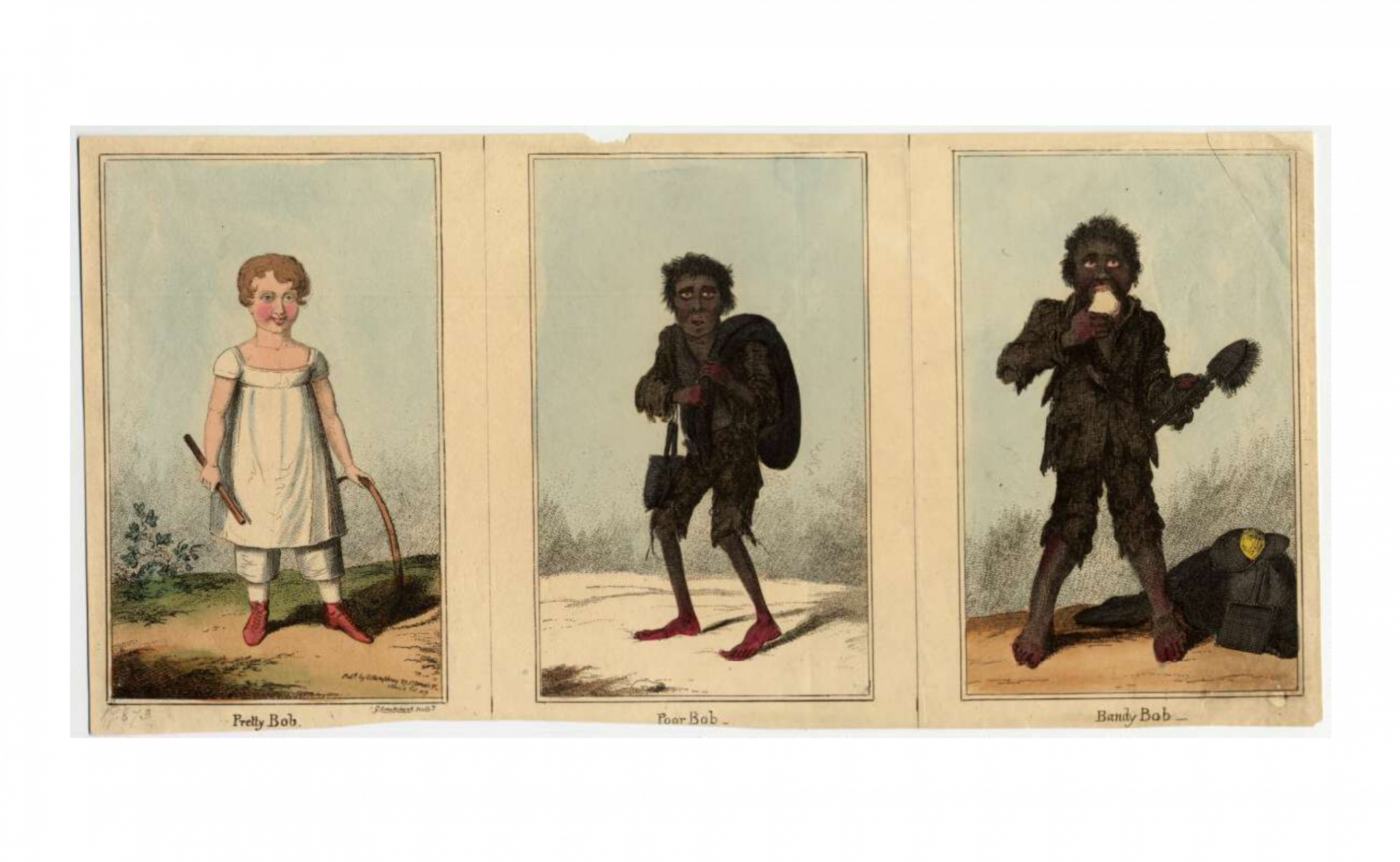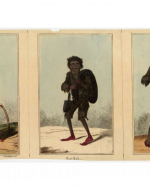Created by Jamie Maass on Mon, 02/07/2022 - 14:03
Description:
Historic Context: During the Romantic Era, child labor was common within impoverished communities and often resulted in horrific realities. Children who were orphans or from a background of poverty were often sold into work by parents or orphanages. The work these children were expected to do was not an easy task and was a very dangerous environment. As soon as parents could find work for the child they were forced to go, the age of child labor ranged from three and up. Even with parliament intervention earlier on, this was not truly monitored until after the Romantic Era. An example of this is chimney sweepers, better known as “climbing boys”. This was a profession where children were sold to a master and often resulting in the master having legal guardianship, leaving these children without escape. Often, the work of a climbing boy or chimney sweep left the children ill, injured, or even dead. As a result of the narrow passage of chimney’s, the child would have to be in a space where there is a barely any amount of movement. This resulted in children having to be in tight spaces for extended amounts of time, hours on end, all day long. Some would have to “buff it”, meaning they would have to remove clothes while in the chimney and use knees and elbows to climb up forcefully. As a result of most chimney’s still being hot, not only would clothes burn but it would leave the child burned and raw. Unfortunately, some children would be so jammed in a chimney they would be stuck for hours, some lucky to be saved, while others with their knees up to their chins were stuck and would suffocate and die. The death of these climbing boys often was concluded as accidental. Some because of excess exposure to soot near their eyes, would end up blind, others with deformed bodies, such as bandy legs (legs narrow then widen at knees and below). Most climbing boys, if they were fortunate to still be in good health would turn into journey men and then into masters, following and continuing the cycle of abusive child labor.
Image Context: The image above gives a great representation to the horrific reality of a chimney sweeper. There are three stages being displayed here, the start of a healthy child, the development of the damage of being a climbing boy, and the long-term reality of this type of abusive child labor. Often an average healthy child will be sold into this work and soon will face many difficulties when exposed to the dangerous environment of chimney sweeping. Within the image a boy was healthy when sold to a master then once exposed to the work there are visible injuries. The boy is covered in soot, clothes are damages, he is skinny (often because of being underfed by masters to make the children smaller), covered in burns from the hot chimneys and exposure to narrow passages that result children scrapping their skin to climb out. Then comes the third phase, this boy has experienced day in and day out the abuse of this work. He has grown within this child labor, eyes are red for overexposure of soot, still covered in soot, cuts and burns remain and continue, body is swollen from injuries and being overworked, and legs are bandy and knocked kneed. Meaning that bone is deformed, and his legs start narrow from the hip but widen at the knee because of position the child is in within the chimney for hours on end. Artwork was often used to represent the realities of chimney sweeper and climbing boys to bring a sense of awareness to people.
Literary Responses: Although there were some changes within legislature to fight child labor (Chimney Sweeps Act in 1834 but most after the 1840’s) many writers and poets took to their craft to also bring awareness as most climbing boys were unaware of their circumstance. Both of William Blake’s “The Chimney Sweeper” poems within Songs of Innocence and of Experience, does just this, it reveals a reality and gives these children a voice they didn’t know they needed. This poem shows the innocence within these children and their unawareness to their degradation. It also helps to show the abusive and unjustified experience of these boys, the reality of their experience and how they eventually use their experience to see truth within institutions around them (government, church, etc.). And shows Blakes anger and critique of social injustice placed by uncaring parents, the church, and mercenary, “that restrict our vision and prevent us from understanding both our oppression and the infinite possibilities of true perception” (Norton). These two poems help to push and critique the standards of the institution that is in place and the flaws that come with this institution, fighting for justice and equality for climbing boys or chimney sweepers.
Works Cited:
Norton , G. (2014, May 15). William Blake's Chimney Sweeper poems: a close reading . British Library. Retrieved February 7, 2022, from https://www.bl.uk/romantics-and-victorians/articles/william-blakes-chimn...
Children and chimneys - UK parliament. (n.d.). Retrieved February 7, 2022, from https://www.parliament.uk/about/living-heritage/transformingsociety/livi...
Brain , J. (2021, April 7). Chimney sweeps and Climbing boys. Historic UK. Retrieved February 7, 2022, from https://www.historic-uk.com/CultureUK/History-Boy-Chimney-Sweep/
Cruikshank , G. (1819). Print; satirical print: British museum. The British Museum. Retrieved February 7, 2022, from https://www.britishmuseum.org/collection/object/P_1862-1217-512
Copyright:
Associated Place(s)
Part of Group:
Featured in Exhibit:
Artist:
- George Cruikshank


